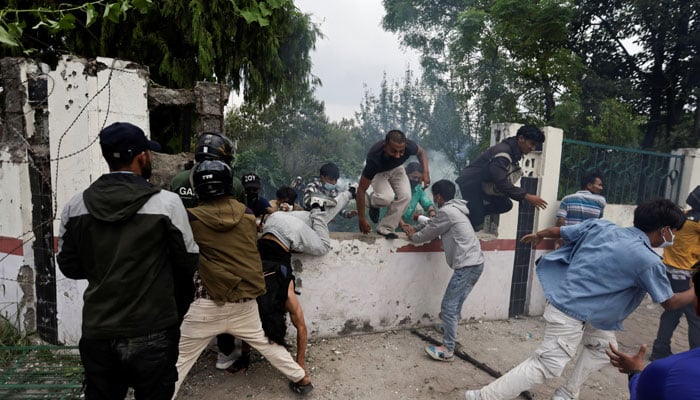Violence erupted in Kathmandu 8 September as thousands of young Nepalese took to the streets and clashed with security forces, leading to the death of at least 19 persons. The unprecedented showdown is being described as an uncontrolled outburst of rage of the country’s youth against corruption, but more so due to a government ban on social media websites. The protests, termed by some as by Gen Z (born between mid-1990s and early 2010s) follow the recent pattern seen in Sri Lanka and Bangladesh, which led to the removal of governments in the two countries in 2022 and 2024, respectively. Observers say the violent protests by the youth in Bangladesh, who ventilated their anger at the ruling party and successfully forced a regime change, have particularly inspired the youth in Nepal.
Among the protesters in Nepal there were a large number of school and college students, some of whom were in their uniforms. Growing dissatisfaction among the youth with corruption in the country seems to have materialised into this demonstration. The youth had, for some time, been seething with anger at what they felt was monumental corruption and mismanagement in recent years. The people were particularly angry that they had to pay high taxes with no “proper documentation” of how it was being utilised. What added fuel to the fire was the government’s 4 September announcement that it was blocking several social media platforms. The youth could not bear it any longer when the government blocked 26 social media platforms, including WhatsApp, Facebook, Instagram, LinkedIn and YouTube.
The social media’s reach in Nepal is such that almost 90 per cent of the 30 million people use them daily. As of 2021, about 7.5 per cent of Nepal’s population was living abroad, reliant on platforms such as Meta’s Messenger to communicate with their families back home. These protests by the young are in sharp contrast to the virtual meekness and abject surrender to the authority we see in the youth in India currently. India has been subjected to social media bans umpteen times, mostly without any rhyme or reason.
Also Read: Thai Soup
From Punjab, Assam, Mizoram to virtually most other states, yet the youth remain stoically unmoved as if they have lost their vigour. This reflects on their ability to think independently and react to the reality around. They apparently think that youth is solely according to the calendar years they have lived, rather than truly being young in their minds, accepting new ideas and expanding their thought horizon in sync with global changes. Youth are known across the globe for centuries as prime movers of socio-political-economic changes. Unfortunately, Indian youth seem to be more busy with their immediate needs or being led by political outfits as if they are, as the American poet HW Longfellow said, “dumb driven cattle.”
Many of them have mentally turned into cattle, probably because at their subconscious level they empathise with gau-rakshaks by resorting to acts not permissible in a civilised society. In reality, there is nothing wrong in protecting any animal, but humans have gained a reputation for having intellectually evolved. Evolution or change is a constant. The Nepalese youth as in several other Asian countries, have once again shown that they would not vegetate, but would do justice to their thinking abilities, come what may. They have demonstrated their resolve to gain new insights into social and political evils and try to stem the rot as far as they can. Their fight against the wrongs com[1]mitted by the Establishment is a healthy sign of an evolving society.
